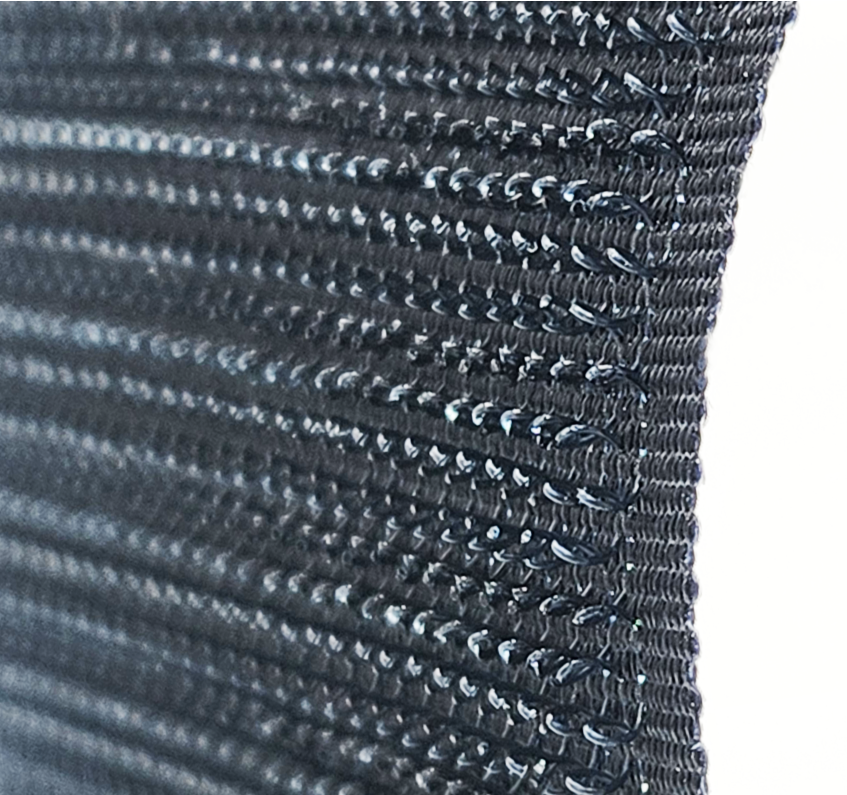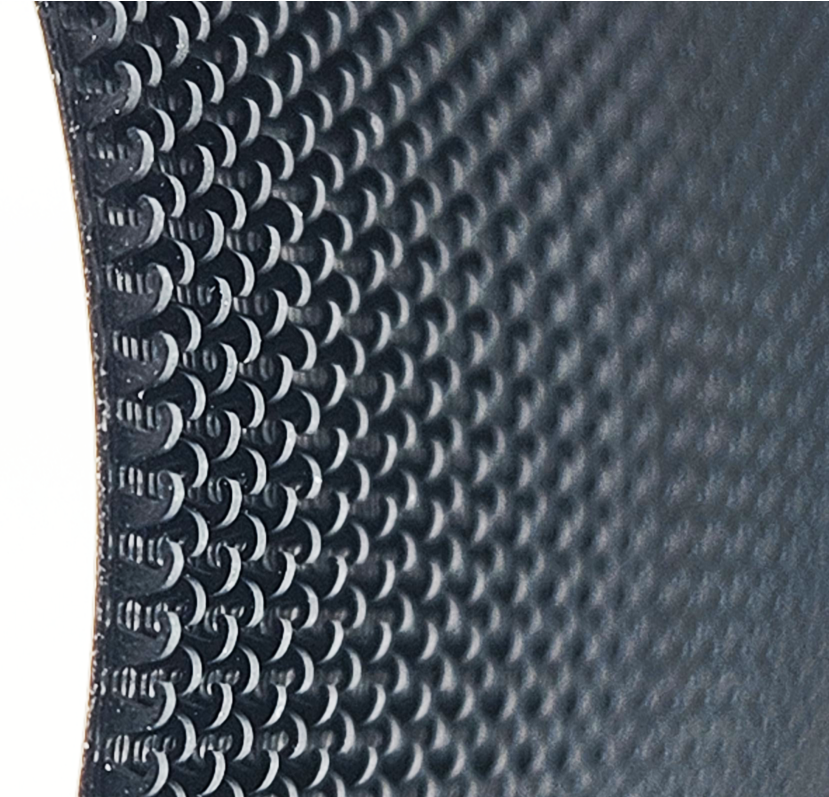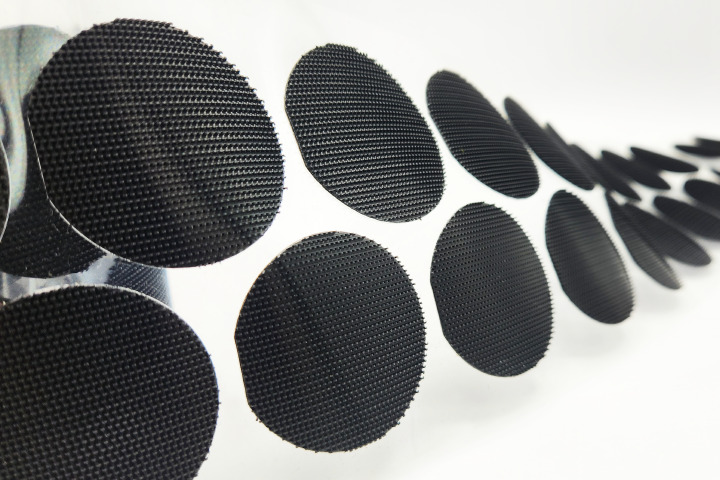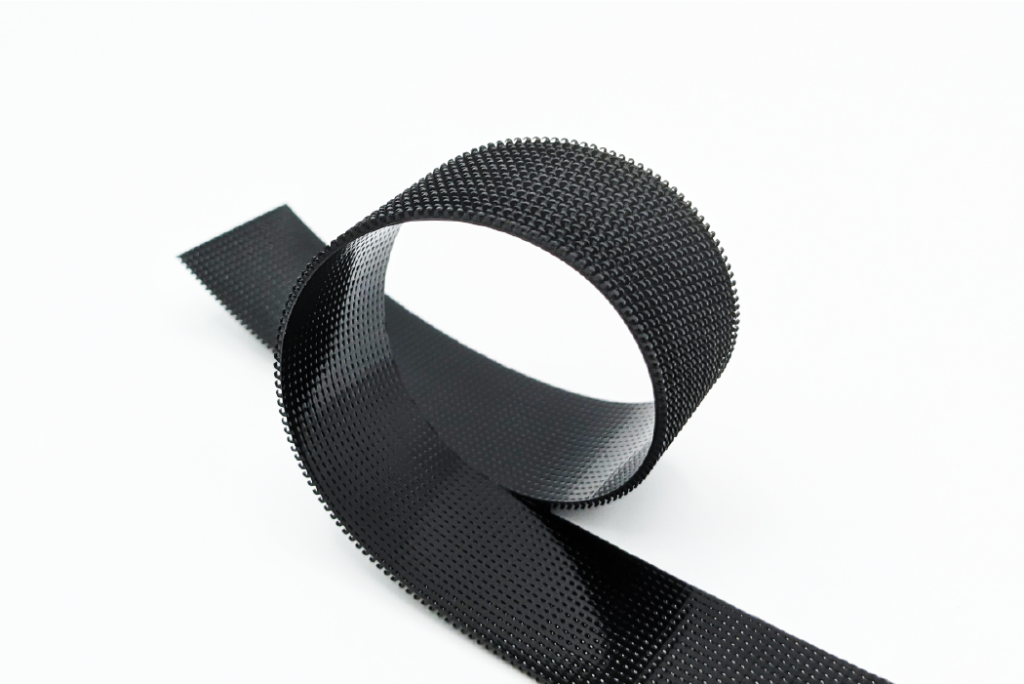When most people think of hook and loop fasteners, they usually think of sew-on nylon hook and loop materials that are made from woven or knit fibers. This filament-based hook and loop is soft, conformable, has moderate peel and shear strength, high cycle life and is ideal for sewing or stitching into textile products.
There are times, however, when a designer or engineer needs more design control over the thickness, performance and cycle life of the reclosable hook and loop fastener. In these instances, a higher performance molded hook fastener may be a better fit to meet these requirements. Customers sometimes call Halco and ask for comparable products to “plastic Velcro” or VELCRO® HTH (high technology hook). The industry terms for plastic hook and HTH hook are extruded hook or molded hook. A wide variety of molded hook fasteners are available to meet unique engineering requirements.
VELCRO® is a trademark owned by Velcro Companies. Plastic Velcro is known as molded hook generically in industry.
Manufacturing and Design Differences Between Regular Hook & Molded Hook Fasteners

Regular filament hook fasteners are made using a knitting or weaving process. A resin filament fiber (nylon, polypropylene or polyester) is woven into a material creating loops on its surface. These synthetic fiber loops are then cut at precise intervals to create thousands of individual half loop hooks. The material is then brushed to make each of these individual fiber hooks stand up straighter so that it will better engage the loop material.
Molded hook fasteners are quite different than regular hook as each hook is manufactured precisely and is uniform in its design. Its shape is specifically designed and it is manufactured using an continuous fiber injection molding process that yields a precise structure in each of the hook profiles. Because there is so much control over the molding process, many different hook styles can be made, ranging from soft, low profile hook products to thicker, industrial strength hook fasteners.

Performance differences between regular hook & molded hook
Quantifying the performance difference between molded hook and regular filament hook can vary depending on specific factors such as the application, materials used, manufacturing techniques, and the exact properties required. However, here is a general overview of the potential performance differences between these two types of hook fasteners:
Durability and Longevity:
- Molded Hook: Molded hook fasteners are often more durable and longer-lasting due to their solid construction and uniform hook shapes. They are less prone to deformation and can withstand repeated use without losing their effectiveness.
- Regular Filament Hook: Regular filament hook fasteners may be less durable over time compared to molded hooks. The individual fibers in filament hooks can wear down or break with extensive use, potentially reducing their performance and lifespan.
Engagement Strength:
- Molded Hook: Molded hooks tend to have a more precise and consistent engagement with loop fasteners, leading to stronger bond strength. The uniform hook structures interlock securely with loop fibers, providing reliable fastening.
- Regular Filament Hook: While regular filament hooks can provide good engagement strength, they might not offer the same level of precision and consistency as molded hooks. Variations in filament length and arrangement could lead to slightly less reliable fastening.
Customization and Design Flexibility:
- Molded Hook: Molded hooks offer greater flexibility in terms of customization. Manufacturers can design and create hooks with specific shapes, sizes, and densities to meet unique application requirements.
- Regular Filament Hook: Customization options for regular filament hooks are somewhat limited by the weaving and brushing processes. While different filament lengths can be used, the level of precision and customization may be less than that of molded hooks.
Applications and Load-Bearing Capacity:
- Molded Hook: Molded hooks are often used in heavy-duty and high-load applications due to their enhanced strength and durability. They can handle more substantial loads and stresses without failing.
- Regular Filament Hook: Filament hooks are suitable for a wide range of applications but might be less suitable for heavy loads or extreme conditions where the hook’s integrity could be compromised.
Cost Considerations:
- Molded Hook: Molded hooks may be more expensive to manufacture due to the molding process and the use of specialized materials. However, their longer lifespan and enhanced performance may justify the higher upfront cost for certain applications.
- Regular Filament Hook: Filament hooks are generally more cost-effective to produce, making them a more economical choice for applications where extreme durability is not a primary concern.
It’s important to note that the specific performance differences can vary based on the quality of materials, manufacturing techniques, and design considerations. When choosing between molded hook and regular filament hook for a particular application, it’s advisable to consider the specific requirements, load-bearing capacities, expected lifespan, and budget constraints to determine which type of hook fastener is most suitable.
Halco’s Molded Hook Products
Halco has a deep portfolio of engineered, molded hook options and will help you select these products and match it to the knit or woven loop that you need to achieve your thickness, engagement strength and cycle life objectives. The graph below shows the relationship of various nylon molded hook styles to peel and shear values. Please note that polypropylene options are available also with slightly lesser performance.
Halco Molded Hook Options, Peel and shear strength

The importance of Loop Selection
It’s important to realize that the peel and shear values of fastening closure are dependent on both the hook and the loop selection. Different styles of loop, whether they be knit loop, woven loop or unnapped loop, provide different engagement strengths and cycle life results. It’s important to talk with a Halco representative to select the right loop material for your application.
Relationship of Hook Style to Cycle Life
Generally the larger and sturdier the hook style, the lower the cycle life. For certain applications, like automotive seat cover, cycle life might not be so important and an engineer may be inclined to specify a larger, sturdier hook. But for other applications, such as in orthopedic products, cycle life might be critically important. Our tech data sheets provide cycle life information for each product, but we suggest you speak with one of our representatives to understand this relationship better.
Putting It All Together. The Halco Difference

Not only does Halco offer a variety of high performance molded hook products (Low Profile Type 1, Type 2, Type 3, Type 4 and Type 10 Industrial Strength) but we also laminate these materials with the very best pressure sensitive adhesive to perform on almost any substrates. We also die-cut these materials and fabricate customized fastening parts for our customers. Let us show you the Halco difference! Give us a call today!
Request A Free sample

Fill out and submit this form to get a free sample of Halco molded hook to evaluate in your process. Also, tell us a little about your project so we can be of help!
